This article was co-authored by Jonathan Frank, MD and by wikiHow staff writer, Luke Smith, MFA. Dr. Jonathan Frank is an Orthopedic Surgeon based in Beverly Hills, California, specializing in sports medicine and joint preservation. Dr. Frank's practice focuses on minimally invasive, arthroscopic surgery of the knee, shoulder, hip, and elbow. Dr. Frank holds an MD from the University of California, Los Angeles School of Medicine. He completed an orthopedic residency at Rush University Medical Center in Chicago and a fellowship in Orthopedic Sports Medicine and Hip Preservation at the Steadman Clinic in Vail, Colorado. He is a staff team physician for the US Ski and Snowboard Team. Dr. Frank is currently a scientific reviewer for top peer-reviewed scientific journals, and his research has been presented at regional, national, and international orthopedic conferences, winning several awards including the prestigious Mark Coventry and William A Grana awards.
There are 13 references cited in this article, which can be found at the bottom of the page.
wikiHow marks an article as reader-approved once it receives enough positive feedback. This article received 14 testimonials and 100% of readers who voted found it helpful, earning it our reader-approved status.
This article has been viewed 1,284,443 times.
Diagnosing a broken thumb is the first step to seeking the proper care. Thumb injuries have a range of causes, from a nasty jam while playing sports to a simple fall onto the pavement. What’s more, they can be fairly straightforward, clean breaks, or multiple fractures along a joint that require surgery to repair. Learning the symptoms of a broken thumb and what to expect regarding treatment options is essential to properly recovering from the injury. We’ll help you examine your thumb, visit a professional for aid, and assess your treatment options.
Things You Should Know
- See a doctor immediately if you have any severe pain, deformities, numbness, or lack of mobility in your thumb.
- Undergo a physical examination or x-ray at the doctor’s office or emergency room to get an accurate diagnosis.
- Undergo non-surgical or surgical treatment to realign and repair your thumb, depending on the severity of the injury.
- Wear a cast for 2-6 weeks and train with a physical therapist to restore strength and mobility to your thumb.
Steps
Symptoms of a Broken Thumb
-
1Note any severe pain in your thumb. It is normal to experience severe pain right after you break your thumb. The pain happens because your bones have nerves surrounding them. When a bone breaks, it can irritate or compress the surrounding nerves, which causes pain. If you don’t experience severe pain right after the injury, there is a chance that your thumb is not broken.[1]
- If your thumb is broken, you will also most likely experience severe pain if something touches your thumb or when you try to bend it.
- If you’re experiencing intense, acute pain, you’re probably dealing with a break, rather than a sprain, the latter of which involves less intense, more manageable pain.[2]
- Generally, the closer the pain is to the joint where your thumb meets the rest of your hand (closest to the webbing between your thumb and forefinger), the more cause for concern and the greater the potential for complication of the injury.
-
2Look for any deformities at the site of the injury. Look to see if your thumb appears normal. Is it bent at an odd angle or twisted in some strange way? Also check to see if there is any bone protruding out of the skin. If you notice any of these characteristics, it is very likely that you have broken your thumb.[3]
- If broken, your thumb will also most likely have bruises on it, which is a sign that the capillaries in the tissue of the thumb have broken open.
- While a sprained thumb may also be misshapen due to swelling, broken thumbs often involve much more prominent or irregular deformities.[4]
Advertisement -
3Test your thumb’s range of motion. If you have broken your thumb, moving it will cause you serious and severe pain. Your ligaments connecting your bones will also most likely be unable to function properly, which can also make it difficult to move your thumb.[5]
- In particular, check to see if you can move your thumb backwards. If you can move it backwards without pain, your thumb may be sprained rather than broken.
-
4Check for any numbness, tingling, or coldness your thumb. Aside from causing pain, compressed nerves can also make your thumb go numb. Your thumb might also begin to feel cold. This is because a fractured bone or a lot of swelling can block the blood vessels that carry blood into your thumb and surrounding tissue.[6] Consult a doctor immediately to treat any numbness in your hand.
- Your thumb might also turn blue if it is receiving very little or no blood.
- A sprained thumb often isn't accompanied by numbness or tingling.[7]
-
5Look for severe swelling around your thumb. When you break a bone, the area around it will swell up due to inflammation. Your thumb will begin to swell 5 to 10 minutes after the injury has occurred. After the thumb swells, it may begin to stiffen.[8]
- Since thumb sprains can also cause severe swelling, swelling alone isn’t enough to diagnose a broken thumb. It’s best to see a healthcare professional for a proper diagnosis.[9]
- The swelling in your thumb might also affect the closest fingers to your thumb.
Seeking Medical Attention
-
1Visit your doctor or go to the emergency room. If you think you have broken a thumb, immediately visit the emergency room so that a professional can set it. If you wait too long, the swelling caused by the broken bone can actually make it too difficult to realign the bones, which means that your thumb could be permanently bent.[10]
- In addition, broken thumbs in children can permanently affect their growth by damaging their growth plates.
- Even if you suspect the injury might be a sprain (or torn ligament) rather than a bone fracture, see a doctor anyway for an accurate diagnosis.[11] Additionally, some serious sprains still require a hand surgeon to repair. Ultimately, leave the final diagnosis and treatment decisions to a medical professional.[12]
-
2Undergo a physical examination with a doctor. Describe your symptoms to the doctor and allow them to physically examine your thumb. They may test your strength and movement in the thumb by comparing it to that of your uninjured thumb. Another test includes touching the tip of your thumb to your index finger before applying pressure to the thumb to check your weakness.[13]
-
3Get an x-ray taken of your thumb. The doctor will likely order x-rays of your thumb from a variety of angles.[14] This will not only confirm their diagnosis, but it will also show the doctor exactly how many fractures your thumb has sustained, which will assist in determining the best treatment option. The angles for the x-rays include:[15]
- Lateral: The lateral view is an x-ray with the hand resting on its side, so that the thumb is up.
- Oblique: The oblique view is an x-ray with the hand tilted, resting on its side, so that the thumb is up.
- AP: The AP view is an x-ray of your hand in a flattened position, from above.
-
4Talk to your doctor about getting a CT scan. A computed tomography (CT) scan can also be referred to as a computerized axial tomography (CAT) scan. A CT scan uses x-rays and a computer to create images of what the inside of your body parts (in this case, your thumb) look like. This way, your doctor can get a better idea of what the break is like and the best way to go about fixing it.[16]
- Tell your doctor if you are pregnant, since CT scans might cause harm to the fetus.
-
5Have your doctor diagnose the type of break. Once your doctor has run the relevant tests, they will diagnose the specific type of fracture you have sustained. This will determine the complexity of the treatment options available.[17]
- Extra-articular fractures are those that take place away from a joint along the length of 1 of the 2 bones in the thumb. While painful and requiring 6 weeks to heal, these fractures do not typically require surgical intervention.
- Intra-articular fractures take place along the joint, often requiring surgical intervention to help the patient retain as much movement in the joint after recovery as possible.
- Of the intra-articular thumb fractures, the 2 most common are a Bennett fracture and a Rolando fracture. In both, the thumb fractures (and likely dislocates) along the carpometacarpal joint (the thumb joint closest to the hand).
- The major difference between the 2 intra-articular fractures is that a Rolando fracture involves 3 or more bone fragments that almost always require surgical realignment, while a Bennett fracture is a single, clean break and may occasionally forgo surgery[18]
Treating a Broken Thumb
-
1See an orthopedic surgeon for an expert opinion. An orthopedist will look at your x-rays and other tests to help determine the best treatment option. They will take into account the type of fracture (intra- or extra-articular), as well as the complexity (Bennett versus Rolando fractures).[19]
-
2Ask about non-surgical options. In relatively straightforward cases (such as an extra-articular fracture) the doctor may be able to replace the fracture fragments manually without surgery.[20] They will provide anesthesia before attempting to realign the fragments.
- This method (also referred to as a closed reduction) typically consists of the doctor pulling and tugging along the break to realign it while using a fluoroscopy (continuous, realtime x-raying) to see when the fragments are realigned.[21]
- Note that some Rolando fractures, especially those where the bones are shattered into too many pieces to screw or pin together, may also be treated in this method with the surgeon molding the fragments to the best of his ability (known as an open reduction).[22]
-
3Consider surgical treatments. For intra-articular fractures (such as Bennett and Rolando fractures), your orthopedist will usually suggest surgery. The specific type of surgery will depend on the complexity of the fracture(s). Typical options include:[23]
- Using fluoroscopy to place wires through the skin to realign the fragments, known as “external fixation.” This option typically pertains to Bennett fractures where the fragments have remained very close together.
- Having a surgeon open the hand to place small screws or pins into the bones in order to keep them properly aligned. This is known as “internal fixation.”
- Potential complications from surgical options include nerve or ligament injuries, stiffness, and increased risk of arthritis.[24]
-
4Wear a cast for about 6 weeks to immobilize your thumb. Whether your particular case calls for a surgical or non-surgical option, the doctor will place your thumb in a spica cast (a cast that isolates your thumb while allowing the other fingers to move freely) to immobilize it and keep all of the fragments perfectly in place while you recover from the fracture.[25]
- Expect to wear the cast anywhere from 2 to 6 weeks. Most cases require wearing a cast for closer to 6 weeks.[26]
- Your doctor may also schedule follow-up appointments during this time.
-
5See a physical therapist to restore strength and mobility. Depending on the length of time you spend in the cast and your mobility upon the removal of the cast, your doctor may recommend that you see a physical or occupational therapist.[27] A therapist will be able to provide a number of flex and grip exercises to rebuild strength due to atrophied muscle during the immobilization period.[28]
Expert Q&A
-
QuestionWhat do I do if the tip of my thumb has been numb for a whole day?
 Daniel Wozniczka, MD, MPHDr. Wozniczka is an Internal Medicine Physician, who is focused on the intersection of medicine, economics, and policy. He has global healthcare experience in Sub Saharan Africa, Eastern Europe, and Southeast Asia. He serves currently as a Lieutenant Commander in the U.S. Public Health Service and a Medical Officer for the Epidemic Intelligence Service in the CDC. He completed his MD at Jagiellonian University in 2014, and also holds an MBA and Masters in Public Health from the University of Illinois at Chicago.
Daniel Wozniczka, MD, MPHDr. Wozniczka is an Internal Medicine Physician, who is focused on the intersection of medicine, economics, and policy. He has global healthcare experience in Sub Saharan Africa, Eastern Europe, and Southeast Asia. He serves currently as a Lieutenant Commander in the U.S. Public Health Service and a Medical Officer for the Epidemic Intelligence Service in the CDC. He completed his MD at Jagiellonian University in 2014, and also holds an MBA and Masters in Public Health from the University of Illinois at Chicago.
Internal Medicine Physician You may have nerve compression as a result of a broken bone. Talk with your primary care doctor.
You may have nerve compression as a result of a broken bone. Talk with your primary care doctor. -
QuestionMy thumb is very sore, and will bend forward but not backwards. Could this related to carpal tunnel syndrome?
 Daniel Wozniczka, MD, MPHDr. Wozniczka is an Internal Medicine Physician, who is focused on the intersection of medicine, economics, and policy. He has global healthcare experience in Sub Saharan Africa, Eastern Europe, and Southeast Asia. He serves currently as a Lieutenant Commander in the U.S. Public Health Service and a Medical Officer for the Epidemic Intelligence Service in the CDC. He completed his MD at Jagiellonian University in 2014, and also holds an MBA and Masters in Public Health from the University of Illinois at Chicago.
Daniel Wozniczka, MD, MPHDr. Wozniczka is an Internal Medicine Physician, who is focused on the intersection of medicine, economics, and policy. He has global healthcare experience in Sub Saharan Africa, Eastern Europe, and Southeast Asia. He serves currently as a Lieutenant Commander in the U.S. Public Health Service and a Medical Officer for the Epidemic Intelligence Service in the CDC. He completed his MD at Jagiellonian University in 2014, and also holds an MBA and Masters in Public Health from the University of Illinois at Chicago.
Internal Medicine Physician This is very unlikely to be a result of carpal tunnel syndrome. Carpal tunnel syndrome generally only affects things innervated by the Median nerve.
This is very unlikely to be a result of carpal tunnel syndrome. Carpal tunnel syndrome generally only affects things innervated by the Median nerve.
Warnings
- Tell your doctor if you are pregnant before having an x-ray done. Infants are more sensitive to x-rays, so it is best to avoid this method of determining if your thumb is broken or not.⧼thumbs_response⧽
- While this article offers medical information regarding a broken thumb, it should not be substituted for professional medical help. Always see your doctor for a proper diagnosis and treatment options for any potentially serious injury.⧼thumbs_response⧽
References
- ↑ https://pubmed.ncbi.nlm.nih.gov/1729666/
- ↑ https://my.clevelandclinic.org/health/diseases/22226-sprained-thumb
- ↑ http://orthoinfo.aaos.org/topic.cfm?topic=a00011
- ↑ https://my.clevelandclinic.org/health/diseases/22226-sprained-thumb
- ↑ http://orthoinfo.aaos.org/topic.cfm?topic=a00011
- ↑ Stark, C. D., & Bowers, E. S. (2010). Living with sports injuries. New York: Facts On File.
- ↑ https://my.clevelandclinic.org/health/diseases/22226-sprained-thumb
- ↑ http://orthoinfo.aaos.org/topic.cfm?topic=a00011
- ↑ https://my.clevelandclinic.org/health/diseases/22226-sprained-thumb
- ↑ Plancher, K. D. (2006). MasterCases in Hand and Wrist Surgery: Hand and Wrist Surgery. New York: Thieme Medical Publishers.
- ↑ Jonathan Frank, MD. Sports Orthopedic Surgeon & Joint Preservation Specialist. Expert Interview. 31 July 2020.
- ↑ https://www.ncbi.nlm.nih.gov/pmc/articles/PMC2654954/
- ↑ https://www.ncbi.nlm.nih.gov/pmc/articles/PMC2654954/
- ↑ Jonathan Frank, MD. Sports Orthopedic Surgeon & Joint Preservation Specialist. Expert Interview. 31 July 2020.
- ↑ https://pubmed.ncbi.nlm.nih.gov/3791733/
- ↑ Lanz, U., Schmitt, R., & Buchberger, W. (2008). Diagnostic imaging of the hand. Stuttgart: Thieme.
- ↑ https://pubmed.ncbi.nlm.nih.gov/1729666/
- ↑ https://pubmed.ncbi.nlm.nih.gov/19411003/
- ↑ https://www.aafp.org/pubs/afp/issues/2006/0301/p827.html
- ↑ https://www.aafp.org/pubs/afp/issues/2006/0301/p827.html
- ↑ https://www.aafp.org/pubs/afp/issues/2006/0301/p827.html
- ↑ https://www.wheelessonline.com/bones/hand/thumb-fractures-dislocations/
- ↑ https://pubmed.ncbi.nlm.nih.gov/19411003/
- ↑ http://www.eatonhand.com/complic/text10.htm
- ↑ Jonathan Frank, MD. Sports Orthopedic Surgeon & Joint Preservation Specialist. Expert Interview. 31 July 2020.
- ↑ http://orthoinfo.aaos.org/topic.cfm?topic=a00011
- ↑ Jonathan Frank, MD. Sports Orthopedic Surgeon & Joint Preservation Specialist. Expert Interview. 31 July 2020.
- ↑ https://www.aafp.org/pubs/afp/issues/2006/0301/p827.html
About This Article
To diagnose a broken thumb, note any severe pain immediately following the injury. Additionally, check if your thumb is bent at an odd angle or is twisted in a strange way, which may indicate a broken bone. You should also pay attention to any numbness, tingling, or coldness in your thumb. Alternatively, If you can move your thumb backwards without any pain, you may have a sprain instead of a break. To learn how to treat a broken thumb, keep reading!
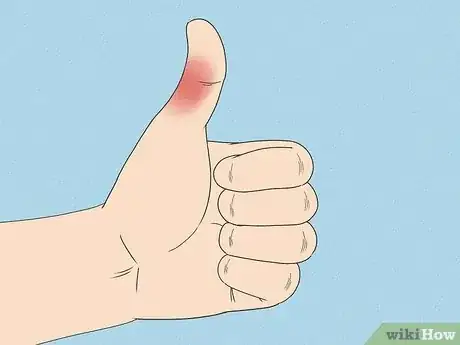
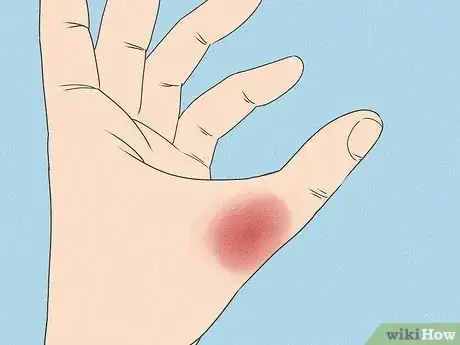
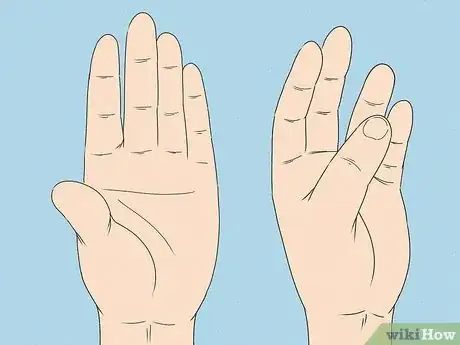
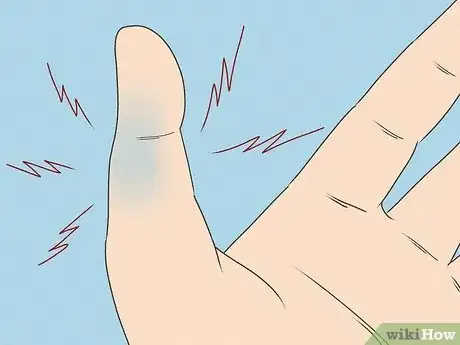
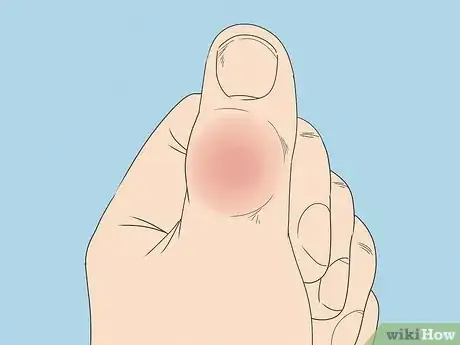
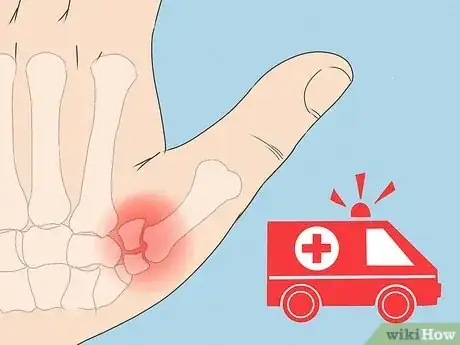

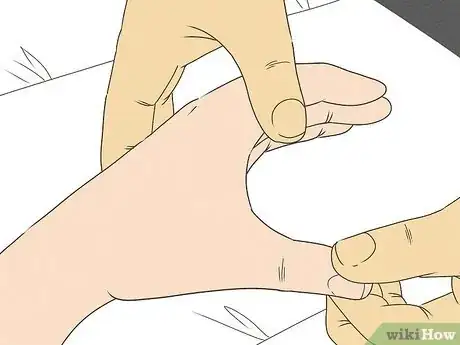
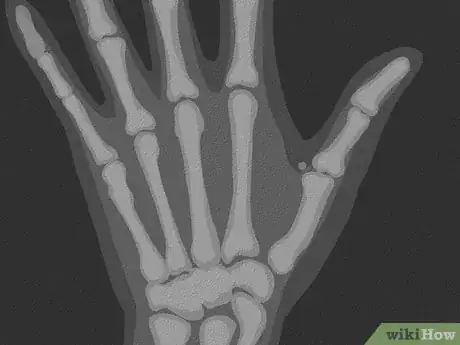
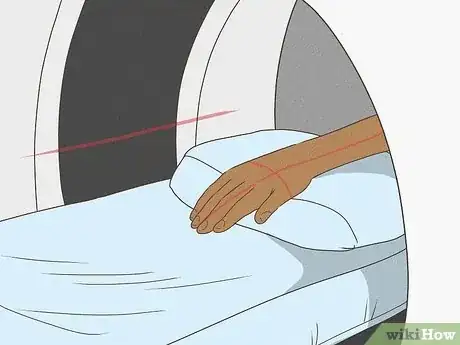
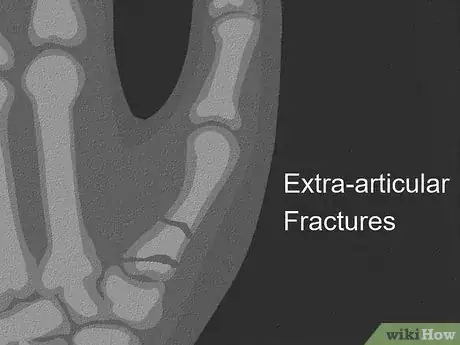
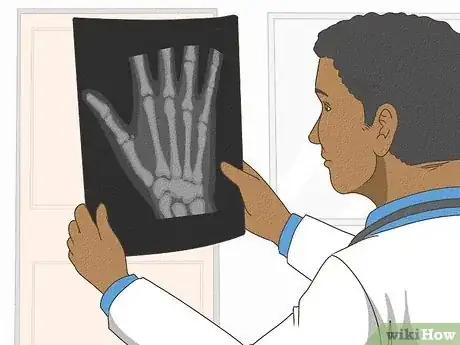
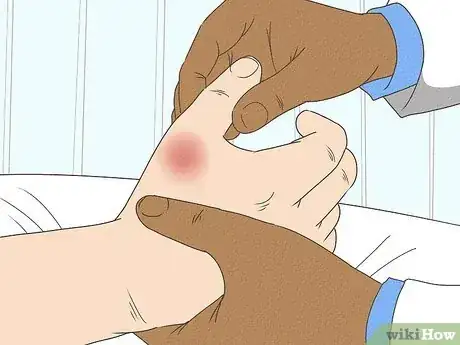
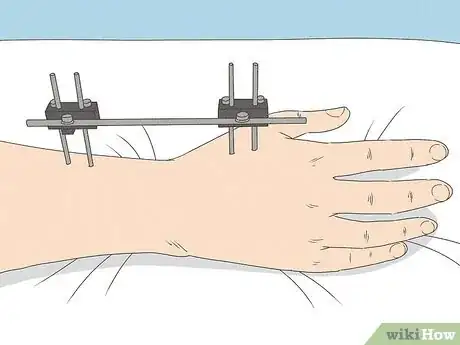
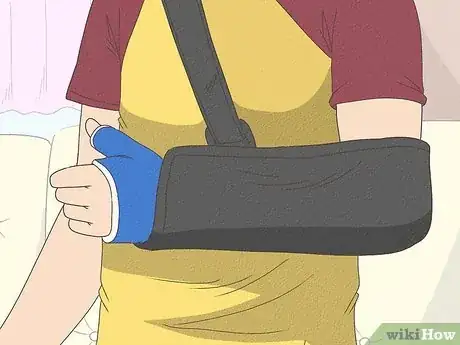
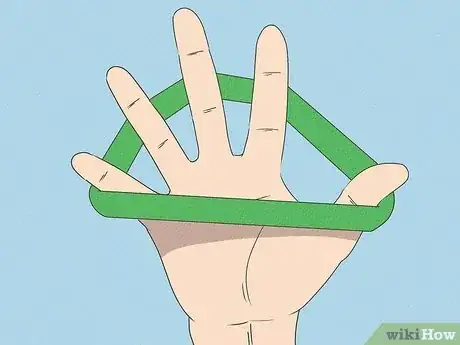
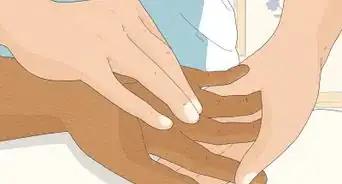
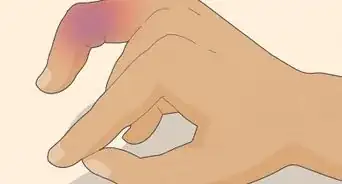
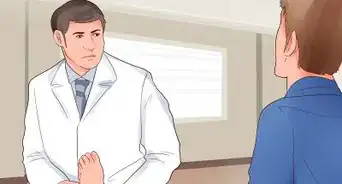
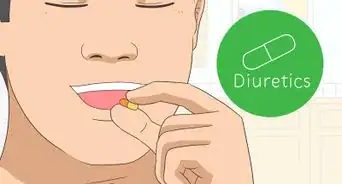

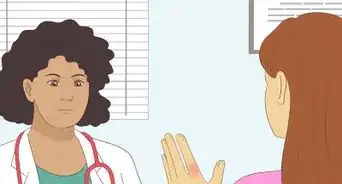

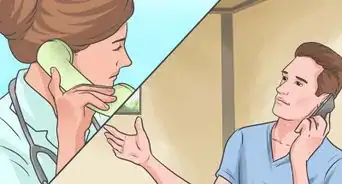
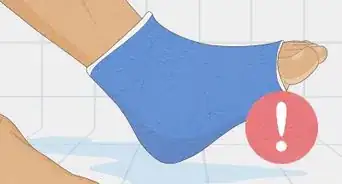

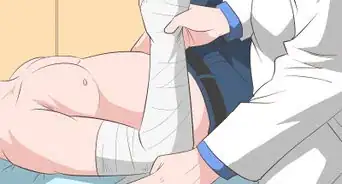
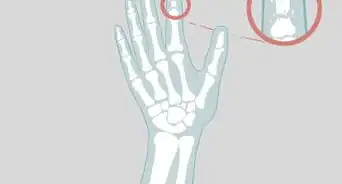









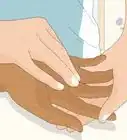
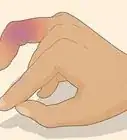
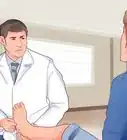




































Medical Disclaimer
The content of this article is not intended to be a substitute for professional medical advice, examination, diagnosis, or treatment. You should always contact your doctor or other qualified healthcare professional before starting, changing, or stopping any kind of health treatment.
Read More...